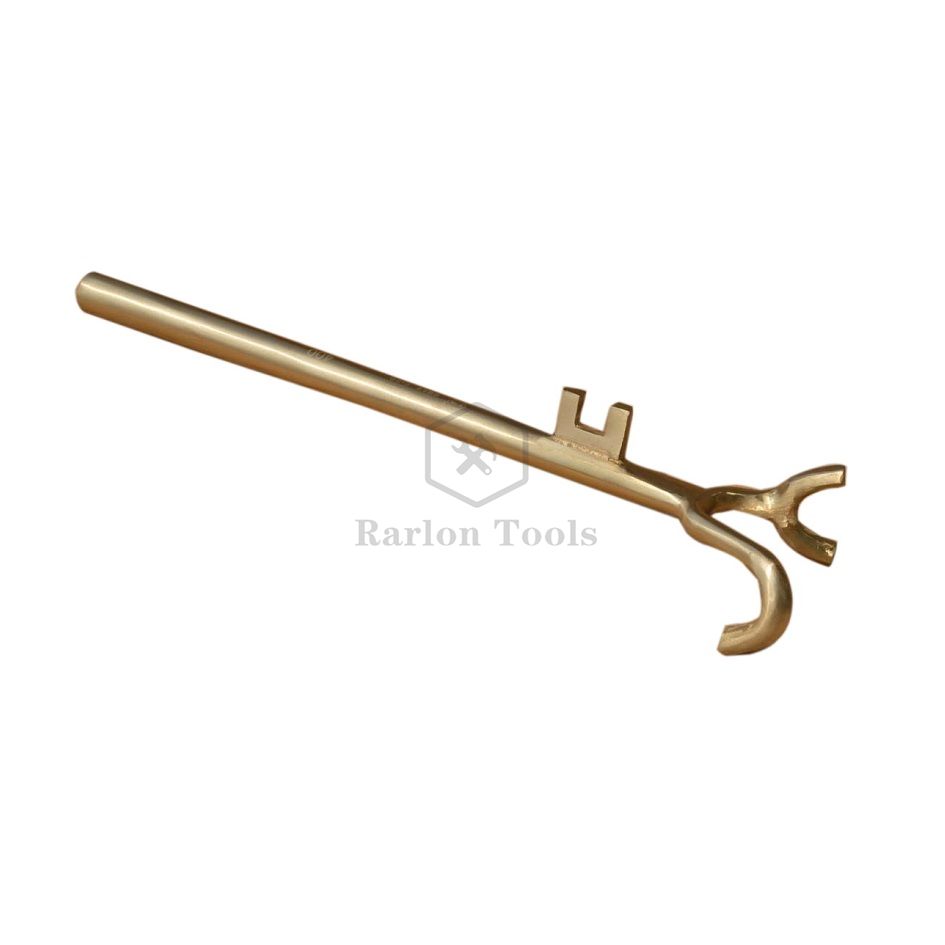The material of the explosion-proof tool is made of beryllium bronze and aluminum bronze. The beryllium bronze alloy and aluminum bronze alloy do not generate sparks when they are hit or rubbed. They are very suitable for manufacturing safety in explosive, flammable, strong magnetic and corrosive occasions tool.
In the process of using explosion-proof tools, the varieties and specifications should be reasonably selected according to the needs, and small ones should not be replaced by large ones. It should also be noted that when using adjustable wrenches, pipe wrenches, and open wrenches, attention should be paid to the direction of the force, and no reverse force can be used. When using a tool with a blade, the hardness of the workpiece itself should be measured first, if its hardness is close to When the hardness of the tool is used, it should be operated carefully and carefully. If it is higher than the hardness of the tool, it is forbidden to use. When the workpiece is tightened by motor, semi-permanently fixed, or due to long-term rust, and no other measures are taken before using the hand tool, the user should be prohibited to avoid damage to the tool.

The surface of the explosion-proof tool is polished and polished after being polished and polished. The active metal molecules on the surface of the surface are exposed to the air and quickly oxidize and blacken, and then rust. The reason is that the water film left on the surface of the part after cleaning forms an electrochemical A layer of electrolyte solution necessary for corrosion. Although the ionization degree of water is small, it can still be ionized into hydrogen ions and hydroxide ions. This ionization process accelerates with increasing temperature. At the same time, carbon dioxide and sulfur dioxide are also dissolved in the water, which is very easy to combine with water.
1. Explosion-proof wrenches and pipe pliers are replaced by small ones, and the use of casing or lengthened casing will cause the wrench to deform and break, and the handle of the wrench will bend, deform, or break; The head of the wrench is deformed and so on.
2. The explosion-proof manual sleeve head is used for operation on the pneumatic tool, which can cause the position of the square hole of the sleeve head to be damaged. When the pneumatic work is performed, the pneumatic sleeve series should be selected.
3. When the pliers head is used as a hammer, it will cause dents on the plier's head or the jaws cannot be properly engaged. Please use appropriate explosion-proof copper hammers and other percussion tools when doing the percussion work. The use of explosion-proof needle-nose pliers when bending high-strength wire and sheet materials will also cause flaws in the mouth of the needle-nose pliers or improper biting of the pliers.
4. Explosion-proof ratchet wrenches are used for percussion wrenches or sleeve lengthening operations, which can make the handle and work break dents. In this case, it is best to use a T-shaped slider head with a sleeve, an F-type lever, and a curved handle-type wrench. The rod or a ratchet wrench with a large specification is used to increase the torque.
The above information is provided by the non-sparking tool factory.
Copyright:@2020-2021
Comments Please sign in or sign up to post.
0
0 of 500 characters used